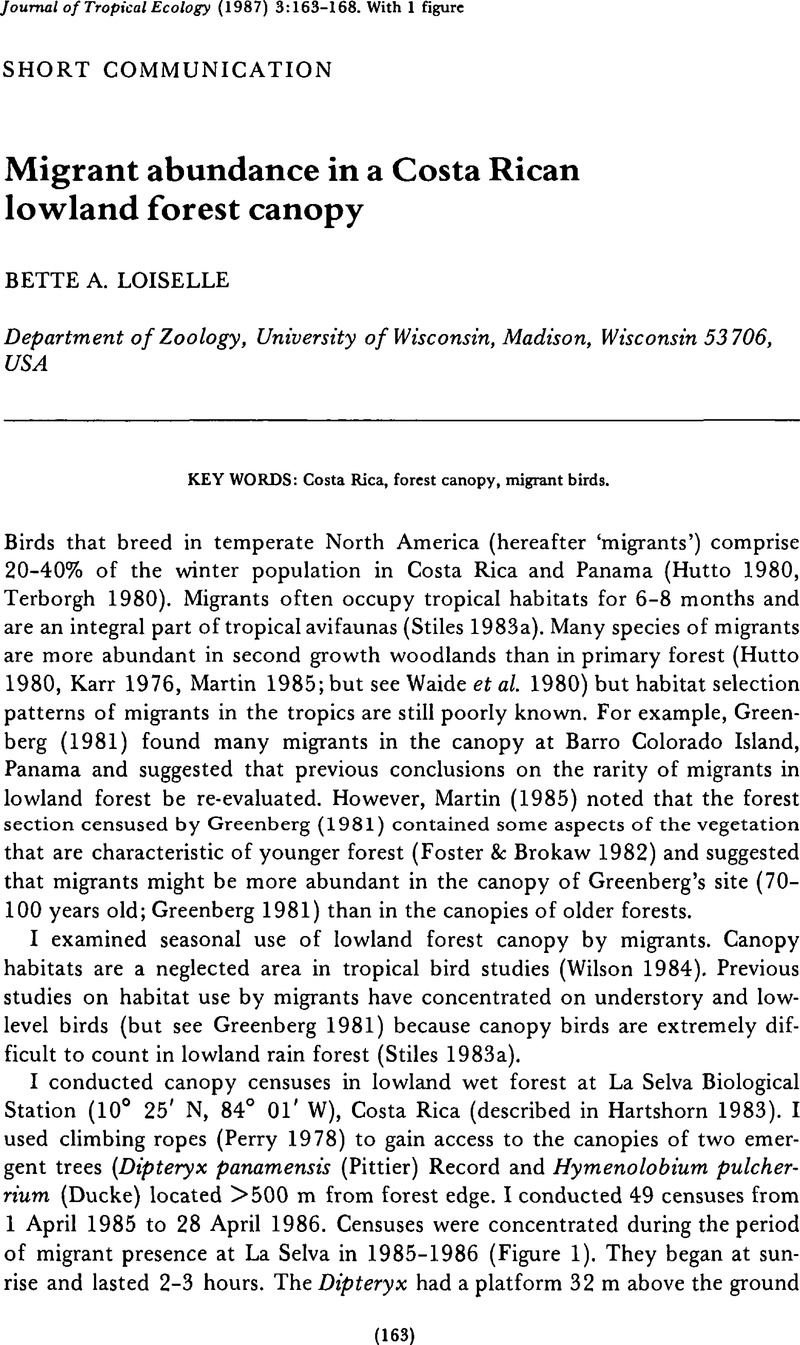Crossref Citations
This article has been cited by the following publications. This list is generated based on data provided by Crossref.
Lowman, Margaret D.
and
Wittman, Philip K.
1996.
FOREST CANOPIES: Methods, Hypotheses, and Future Directions.
Annual Review of Ecology and Systematics,
Vol. 27,
Issue. 1,
p.
55.
Blake, John G.
and
Loiselle, Bette A.
2001.
Bird Assemblages in Second-Growth and Old-Growth Forests, Costa Rica: Perspectives From Mist Nets and Point Counts.
The Auk,
Vol. 118,
Issue. 2,
p.
304.
Blake, John G.
and
Loiselle, Bette A.
2001.
Bird Assemblages in Second-Growth and Old-Growth Forests, Costa Rica: Perspectives From Mist Nets and Point Counts.
The Auk,
Vol. 118,
Issue. 2,
p.
304.
Naka, Luciano Nicolás
and
Stouffer, P. C.
2004.
Structure and Organization of Canopy Bird Assemblages in Central Amazonia.
The Auk,
Vol. 121,
Issue. 1,
p.
88.
Naka, Luciano Nicolás
and
Stouffer, P. C.
2004.
Structure and Organization of Canopy Bird Assemblages in Central Amazonia.
The Auk,
Vol. 121,
Issue. 1,
p.
88.
DERLINDATI, ENRIQUE J.
and
CAZIANI, SANDRA M.
2005.
USING CANOPY AND UNDERSTORY MIST NETS AND POINT COUNTS TO STUDY BIRD ASSEMBLAGES IN CHACO FORESTS.
The Wilson Bulletin,
Vol. 117,
Issue. 1,
p.
92.
Rubim, Paulo
2009.
Sazonalidade e dieta frugívora do saí-andorinha Tersina viridis (Illiger, 1911) em reflorestamento da mata ciliar do Rio Mogi Guaçu, São Paulo, Brasil.
Biota Neotropica,
Vol. 9,
Issue. 3,
p.
111.
Ramachandran, Vivek
and
Ganesh, T.
2013.
Treetops at Risk.
p.
201.
Ramos-Robles, Michelle
Andresen, Ellen
and
Díaz-Castelazo, Cecilia
2016.
Temporal changes in the structure of a plant-frugivore network are influenced by bird migration and fruit availability.
PeerJ,
Vol. 4,
Issue. ,
p.
e2048.



